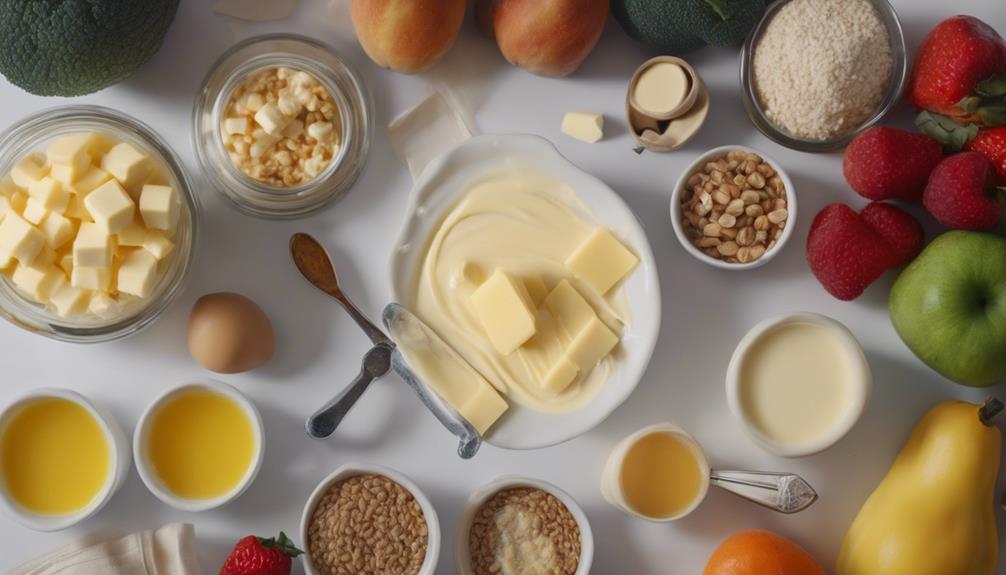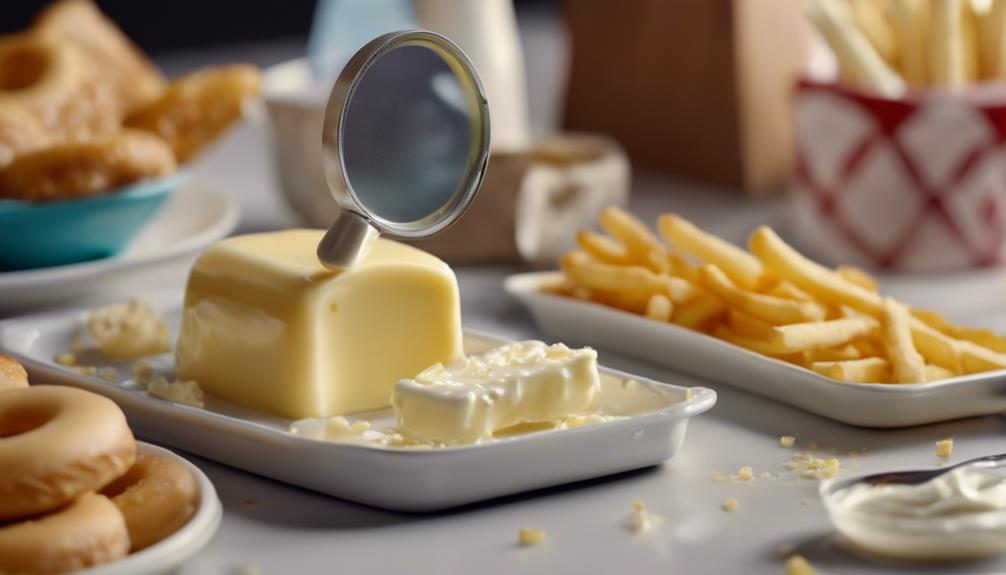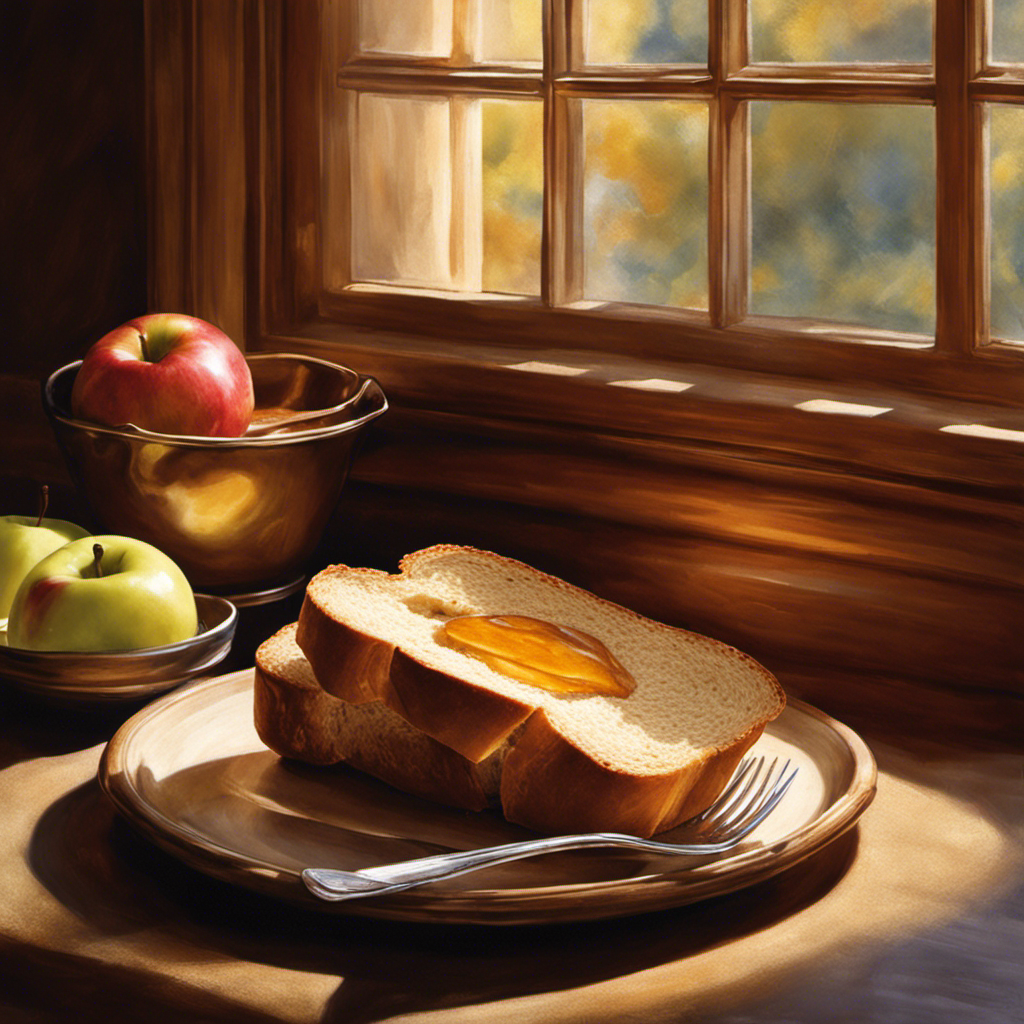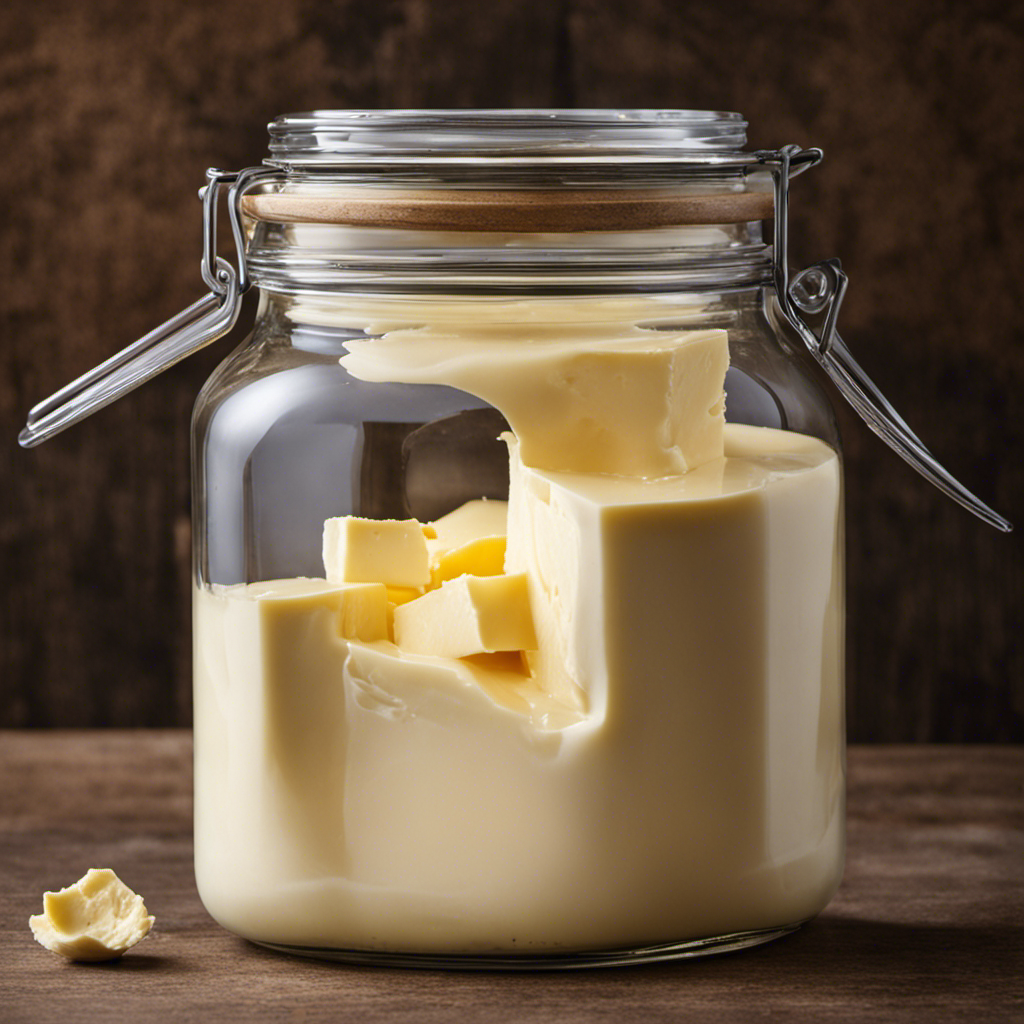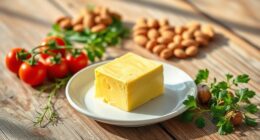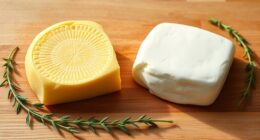Limit yourself to 1-2 tablespoons of butter daily for a healthy diet. Avoid having too much to prevent high cholesterol levels. Monitoring your butter intake is crucial for your heart and weight. Consider opting for heart-healthy fats like olive oil instead. Moderation in daily butter consumption is essential for your overall well-being. Checking out more about the impacts and factors influencing your butter choices can help you make informed decisions for your health.
Key Takeaways
- Limit butter intake to 1-2 tablespoons daily for heart health.
- Excessive butter raises cholesterol and affects weight management.
- Opt for heart-healthy fats like olive oil over excessive butter.
- Butter aids in nutrient absorption but should be consumed in moderation.
- Moderation in daily butter intake is crucial for good health.
Butter Consumption Guidelines
Limit your daily butter intake to 1-2 tablespoons to effectively manage your saturated fat consumption.
A single tablespoon of butter contains approximately 7 grams of saturated fat. Monitoring your intake is essential for maintaining heart health and preventing potential weight gain.
Excessive consumption of butter can lead to elevated cholesterol levels, particularly in individuals with familial hypercholesterolemia. By adhering to the recommended limit, you can better control your saturated fat intake and reduce the risk of associated health issues.
If you're looking for heart-healthy alternatives, consider incorporating olive oil into your diet as a substitute for excessive butter consumption.
Nutritional Benefits of Butter

Butter offers significant nutritional benefits, serving as a rich source of fat that aids in the absorption of essential fat-soluble vitamins like A, D, E, and K. Including butter in your diet can enhance the flavor and satisfaction of your meals while also providing some key nutritional advantages.
Here are some essential points to keep in mind:
- Butter contains saturated fats, which should be consumed in moderation to maintain heart health.
- The fat in butter helps with the absorption of important nutrients such as vitamin A, which is essential for eye health.
- While butter is rich in saturated fats, it also contains some unsaturated fats that can be beneficial for your overall health.
- Incorporating butter into a balanced diet can contribute to the absorption of fat-soluble vitamins that are essential for various bodily functions.
Remember to enjoy butter in moderation to reap its nutritional benefits without overloading on saturated fats.
Health Impacts of Daily Butter Intake
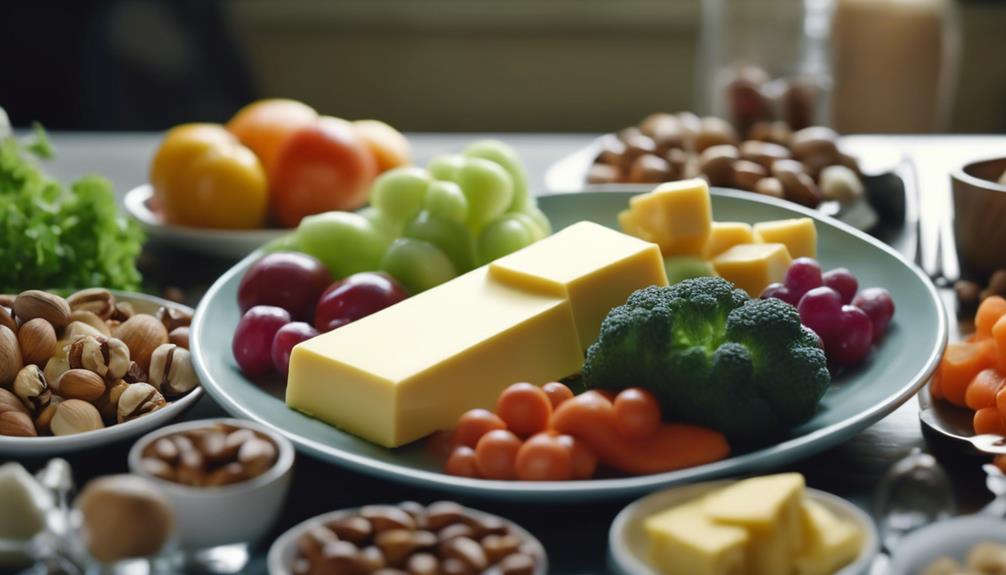
Excessive consumption of butter on a daily basis can have detrimental effects on your health, particularly in relation to weight management and heart health. Butter is high in saturated fat and calories, which can contribute to weight gain if consumed excessively.
Additionally, the saturated fat in butter can raise cholesterol levels, increasing the risk of heart disease and other cardiovascular issues. To maintain good health, consider moderating your daily butter intake and opting for heart-healthy fats like olive oil instead.
Moderation is key when it comes to incorporating butter into your diet to avoid these potential adverse health effects. It's especially important for individuals with existing health conditions or high cholesterol to be cautious with their daily butter consumption.
Risks of Excessive Butter Consumption
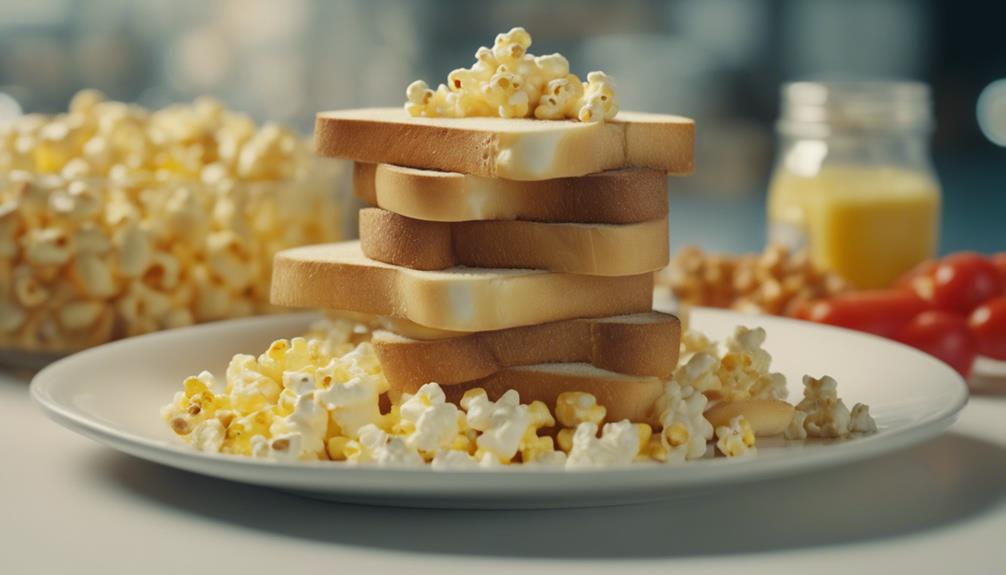
Consuming too much butter poses risks to your health, particularly in relation to cholesterol levels and heart health. Excessive intake of butter can lead to elevated levels of saturated fat in your diet, which in turn can impact your cholesterol levels, especially if you have a genetic predisposition such as familial hypercholesterolemia. To maintain the best heart health, it's important to consume butter in moderation.
Here are some key points to keep in mind:
- Familial hypercholesterolemia affects 5% of the population and can worsen with excessive butter consumption.
- Saturated fats present in butter can raise cholesterol levels, particularly in individuals with genetic predispositions.
- Butter should be consumed moderately to reduce the risk of elevated cholesterol levels, especially for those with familial hypercholesterolemia.
- Limiting all saturated fats, including those in butter, is necessary due to their pro-inflammatory nature and potential impact on heart health.
Factors Affecting Butter's Health Impact
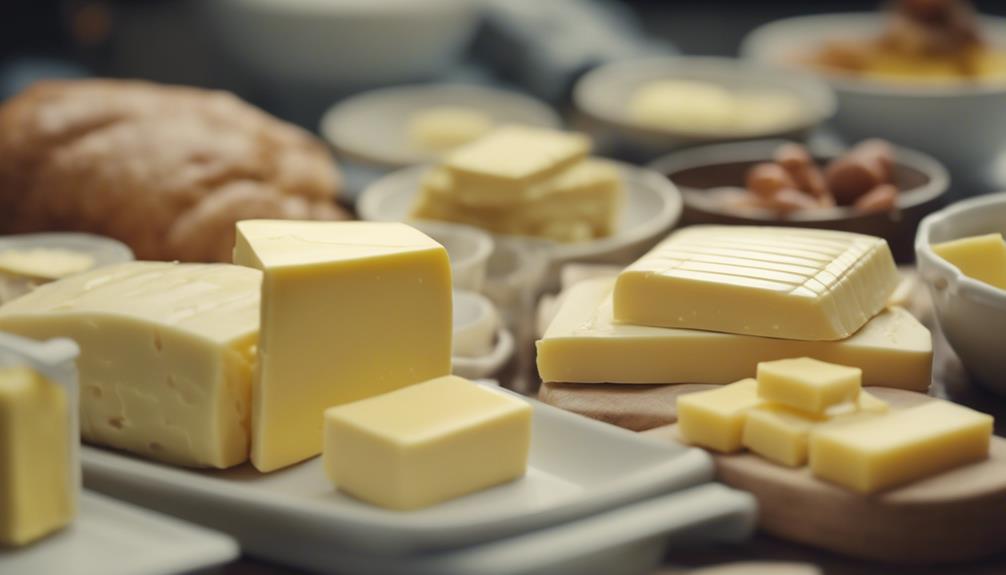
When considering how much butter you can eat a day, your individual health conditions play an important role.
Moderation in butter consumption is key to maintaining a healthy balance in your diet.
Understanding these factors can help you make informed choices about incorporating butter into your meals.
Individual Health Conditions
Individual health conditions profoundly influence how butter impacts your overall health. When it comes to butter consumption, factors like cholesterol levels and familial hypercholesterolemia can markedly affect your health outcomes.
Here are some key points to take into account:
- Cholesterol Levels: High cholesterol individuals should be cautious with butter consumption, as it can potentially exacerbate their condition.
- Familial Hypercholesterolemia: Those with this genetic condition need to be extra vigilant of their butter intake to prevent further health complications.
- Heart Disease: Excessive butter consumption may heighten the risk of heart disease, particularly in individuals already predisposed to cardiovascular issues.
- High Cholesterol: If you have high cholesterol, it's crucial to limit butter intake and explore healthier alternatives like olive oil to safeguard your heart health.
Understanding how your individual health conditions interact with butter consumption can help you make informed choices for a healthier lifestyle. Remember, moderation and awareness are key when it comes to managing your health through diet.
Butter Consumption Moderation
To maintain a balanced diet and promote overall health, it's important to embrace moderation in your butter consumption. Consuming butter in moderation can help reduce the risk of weight gain and negative impacts on heart health associated with its high saturated fat content. By substituting butter with healthier fats like olive oil, you can further enhance your well-being. Moderation is key to ensuring that you enjoy the taste of butter without compromising your health goals.
| Factors Affecting Butter's Health Impact | Effects |
|---|---|
| Excessive consumption of butter | Weight gain over time |
| High in saturated fats | Negative effects on heart health when consumed in large quantities |
| Substituting with healthier fats like olive oil | Can reduce the risk of adverse health effects |
Heart-Healthy Alternatives to Butter
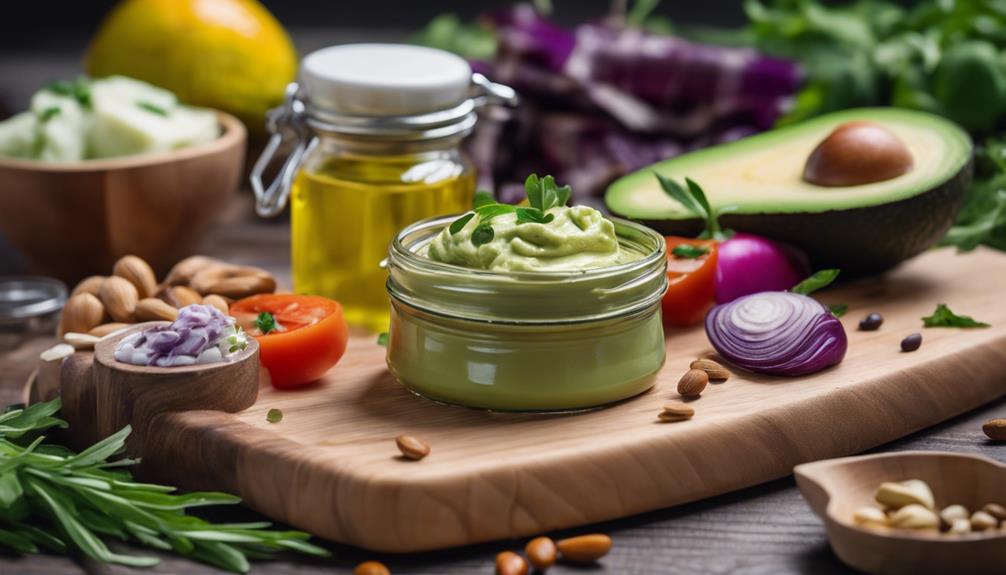
You can swap out butter for heart-healthy alternatives like olive oil or avocado oil, both rich in unsaturated fats. By making this simple switch, you can support your heart health and reduce your intake of saturated fats.
Incorporating plant-based spreads such as hummus or avocado can also help lower your saturated fat consumption.
Heart-Healthy Substitutes
Heart-healthy substitutes for butter, such as olive oil, avocado oil, and walnut oil, are rich in unsaturated fats that support overall cardiovascular health. Making the switch to these alternatives can help reduce the intake of saturated fats and contribute to a balanced diet.
Here are some heart-healthy substitutes to contemplate:
- Olive Oil: A staple in Mediterranean diets, olive oil is high in monounsaturated fats, which are beneficial for heart health.
- Avocado Oil: Rich in oleic acid, avocado oil can help lower bad cholesterol levels, reducing the risk of heart disease.
- Walnut Oil: Packed with omega-3 fatty acids, walnut oil offers anti-inflammatory properties that support heart health.
- Coconut Oil: While high in saturated fats, using coconut oil in moderation can provide medium-chain triglycerides beneficial for heart health.
Moderate Butter Consumption
Consider incorporating heart-healthy alternatives to butter in your daily diet to promote overall well-being and support a healthy heart.
Opting for heart-healthy oils like olive oil, avocado oil, and walnut oil, rich in unsaturated fats, can be a beneficial swap for butter. These oils not only add flavor to your dishes but also help in reducing saturated fat intake, which is vital for maintaining heart health.
Moderating your butter consumption and introducing these unsaturated fats can be a practical approach to supporting your heart while still enjoying flavorful meals.
By making simple changes like this, you can take steps towards a healthier lifestyle and reduce the risk of heart-related issues.
Evidence on Saturated Fats and Health
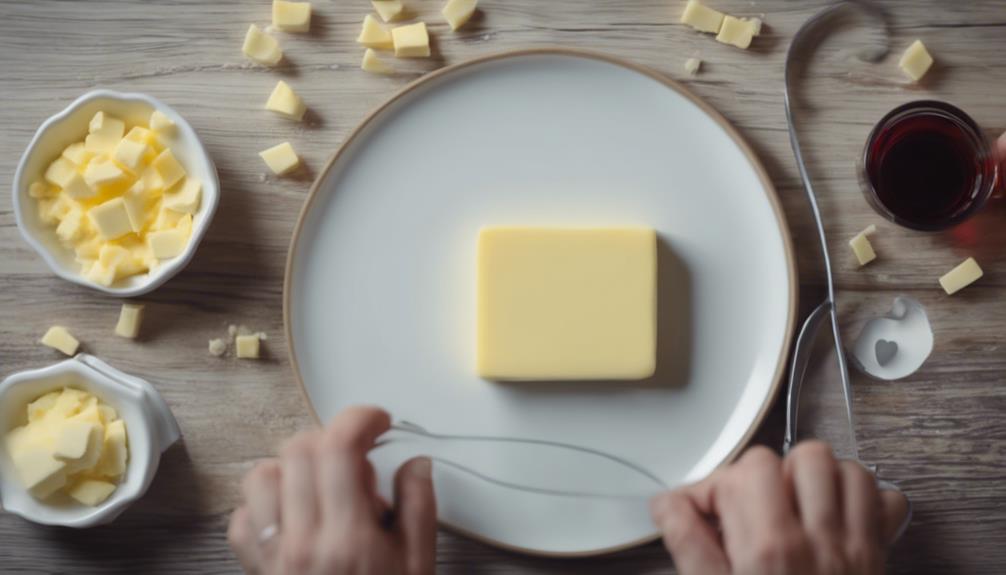
Evidence suggests that diets low in saturated fat can help reduce the risk of heart disease. Consuming higher amounts of saturated fats is linked to increased levels of blood cholesterol, particularly LDL cholesterol, which is known as the 'bad' cholesterol.
To promote heart health, replacing saturated fats with healthier unsaturated fats is recommended. Polyunsaturated fats, in particular, have been shown to be beneficial in lowering LDL cholesterol levels and reducing the risk of heart disease.
The World Health Organization advocates for the substitution of saturated fats with polyunsaturated fats as a means of improving cardiovascular health.
- Diets low in saturated fat reduce the risk of heart disease.
- Higher intake of saturated fats is associated with elevated blood cholesterol levels.
- Replacing saturated fats with unsaturated fats can lower the risk of heart disease.
- Substituting polyunsaturated fats for saturated fats can reduce LDL cholesterol levels.
Impact of Saturated Fat Consumption

To understand the impact of saturated fat consumption on your health, it's essential to examine its effects on blood cholesterol levels. Diets high in saturated fat are linked to elevated blood cholesterol levels, which in turn can increase your risk of heart disease.
Research suggests that reducing your intake of saturated fats and replacing them with unsaturated fats can help lower this risk. Substituting saturated fats with polyunsaturated fats, in particular, has been shown to decrease LDL cholesterol, the 'bad' cholesterol associated with heart disease.
The World Health Organization advocates for replacing saturated fats with polyunsaturated fats for better heart health. By being mindful of your saturated fat intake and opting for healthier unsaturated fats in your diet, you can take proactive steps towards reducing your risk of heart disease.
Butter Vs. Margarine Debate
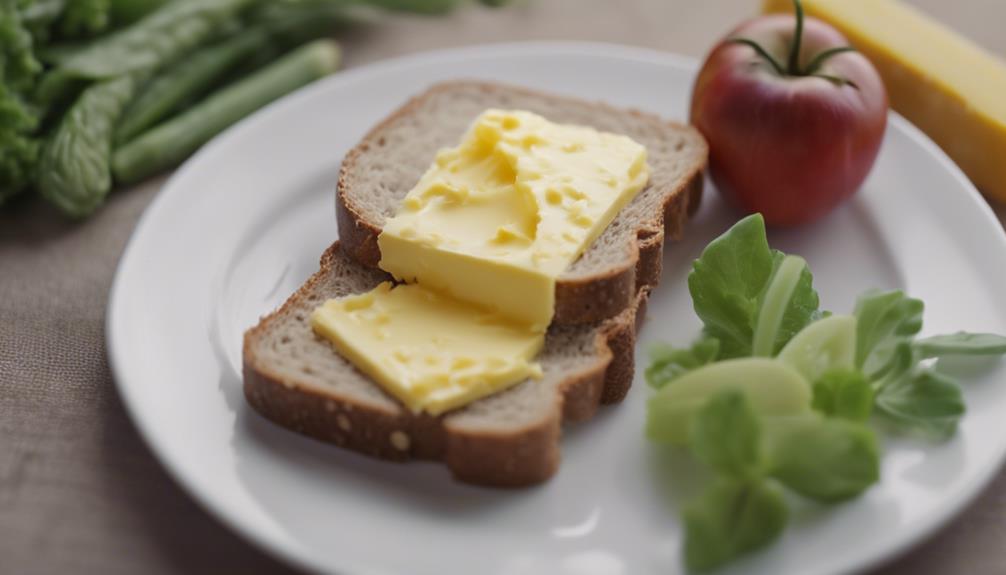
When deciding between butter and margarine, consider that butter contains saturated fat, while margarine offers a lower saturated fat content.
Opting for margarine can be a beneficial choice for those aiming to reduce their intake of saturated fats.
Keep in mind that some margarines also come fortified with heart-healthy plant sterols and essential vitamins.
Butter's Saturated Fat
Considering the saturated fat content in butter compared to margarine, it's important to make informed choices for the sake of your heart health. Butter contains about 7 grams of saturated fat per tablespoon, which can contribute to heart disease and high cholesterol levels.
On the other hand, margarine is often recommended as a healthier alternative due to its lower saturated fat content. By swapping butter for margarine spreads, you can reduce your saturated fat intake and potentially lower your cholesterol levels.
Additionally, incorporating heart-healthy alternatives like avocado, hummus, and plant oils into your diet can further support your heart health goals.
- Butter contains around 7 grams of saturated fat per tablespoon.
- Margarine is a healthier alternative with lower saturated fat content.
- Swapping butter for margarine can help reduce saturated fat intake and lower cholesterol levels.
- Avocado, hummus, and plant oils are heart-healthy alternatives to butter and margarine.
Margarine as Alternative
Margarine, as a butter alternative, offers a lower saturated fat content and is commonly made from vegetable oils. While margarine can be a healthier option due to its reduced saturated fats and cholesterol compared to butter, it's important to be mindful of trans fats.
Some margarine products may contain trans fats, which can elevate bad cholesterol levels and increase the risk of heart disease. Opting for soft or liquid margarine spreads over solid margarine can help lower trans fat intake. For a heart-healthy choice, select margarine varieties with no trans fats and low saturated fats.
When considering margarine as a substitute for butter, prioritize options that provide the benefits of reduced saturated fats without the drawbacks of trans fats. Making informed choices about margarine can contribute to a balanced diet and better overall health.
Heart-Healthy Diet Considerations
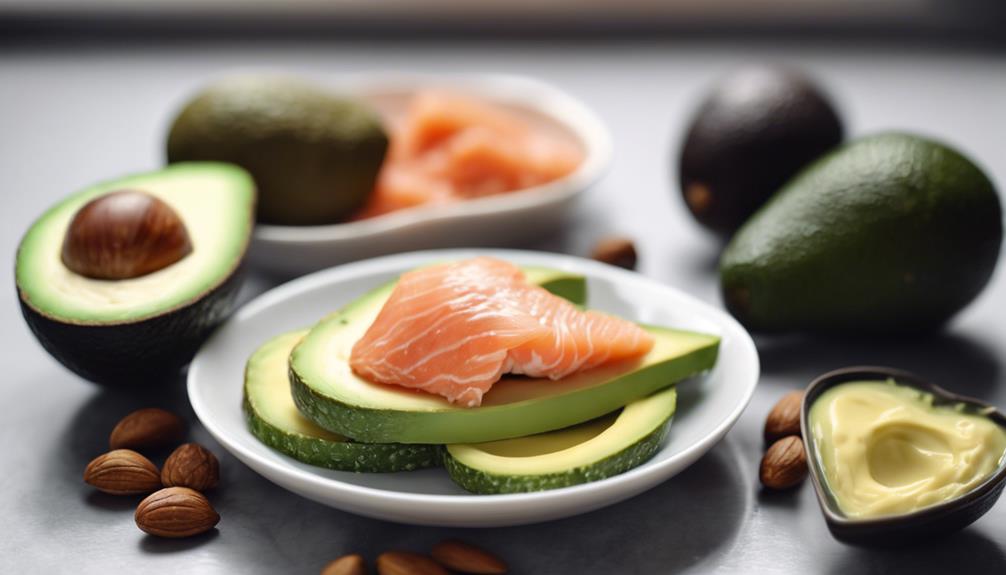
To maintain a heart-healthy diet, prioritize consuming plenty of vegetables, fruits, whole grains, legumes, nuts, seeds, and healthy fats. When considering your cardiovascular health, making mindful choices about the types of fats you consume is vital.
Here are some key considerations for a heart-healthy diet:
- Include lean meats, dairy, and poultry: These can be part of a heart-healthy dietary pattern.
- Opt for minimally processed foods: Choosing whole foods over processed options is essential for supporting heart health.
- Substitute saturated fats with unsaturated fats: Switching to healthier fats like olive oil can help reduce the risk of heart disease.
- Prioritize overall well-being: Following a heart-healthy diet not only supports cardiovascular health but also contributes to your overall wellness.
Frequently Asked Questions
Is 2 Tablespoons of Butter a Day Ok?
Eating 2 tablespoons of butter a day is not recommended. It exceeds the daily limit for saturated fat intake, contributing to weight gain and high cholesterol. Stick to 1 tablespoon daily for better heart health.
What's the Healthiest Butter to Eat?
When considering the healthiest butter to eat, opt for grass-fed butter or ghee for their nutritional benefits. Choose unsalted or organic options to reduce sodium intake and avoid exposure to pesticides. European-style butter offers a richer taste.
What Are the Benefits of Eating Butter Everyday?
Indulging in butter daily can elevate your meals by enhancing flavors and aiding in absorbing essential vitamins. Remember, butter in moderation is key for a balanced diet. Balance it with heart-healthy fats for overall well-being.
Can You Use Too Much Butter?
You can use too much butter, which can lead to weight gain and negatively impact cholesterol levels. Moderation is vital, with guidelines suggesting limiting saturated fat intake to less than 10% of daily calories.
Conclusion
So, how much butter can you eat a day?
The recommended limit is around 1-2 tablespoons, which is equivalent to about 14-28 grams.
Surprisingly, studies have shown that moderate butter consumption can actually have some nutritional benefits, but it's important to be mindful of your overall saturated fat intake.
By balancing your diet with a variety of healthy fats and whole foods, you can enjoy butter in moderation while still maintaining a heart-healthy lifestyle.
